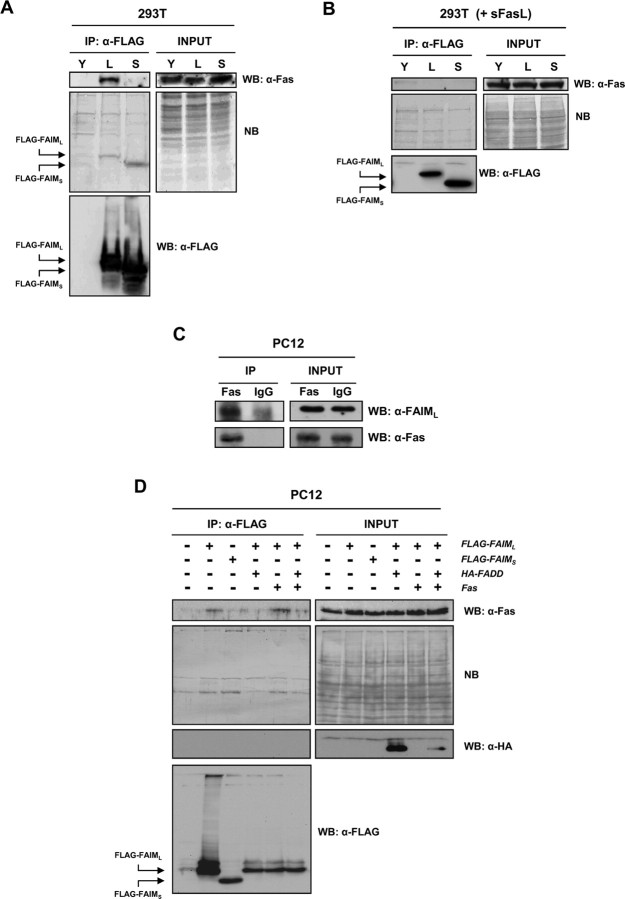Figure 9.
FAIML associates with Fas. A, HEK293T cells were transiently transfected with pEYFP (Y), pcDNA3-FAIML–FLAG (L), or pcDNA3-FAIMS–FLAG (S). After 24 h, lysates were performed and subjected to immunoprecipitation using FLAG-specific mAb M2-coupled agarose beads (Sigma). The immunoprecipitates (eluted fractions) were resolved by SDS-PAGE, and proteins were transferred onto PVDF membranes and immunoblotted with anti-Fas (top panels) or anti-FLAG (M2) (bottom panel) antibodies. All membranes were also stained with Naphtol Blue to confirm equal loading (middle panels). B, HEK293T cells transfected as in A were left untreated or treated with soluble FasL (sFasL). Western blots were performed as stated for A. C, One milligram of PC12 cell lysate was immunoprecipitated (IP) with anti-Fas antibody (Fas) followed by Western blot with either FAIML (top panels) or Fas (bottom panels) antibodies. A nonrelevant iso-specific antibody (IgG) was used as a negative control. D, PC12 cells were transiently transfected with different constructions carrying FLAG-FAIML, FLAG-FAIMS, HA-FADD, and/or pcDNA3-mFas (Fas). After 48 h, immunoprecipitation and Western blot analysis were performed as in A. Blotting the membranes with anti-HA confirmed the PC12 cells transfection with the HA-FADD construct. When FADD was overexpressed, there was no longer any interaction between FAIML and Fas.

